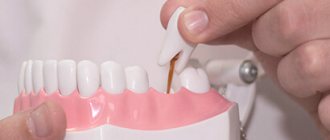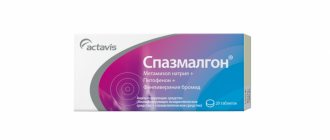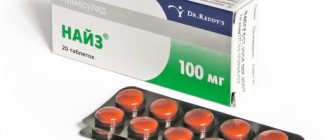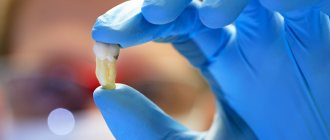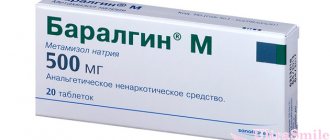Destruction of the tissues that form the crown and root parts of the tooth invariably leads to discomfort, and in more advanced cases – to acute, throbbing or nagging pain. In dentistry, toothache has a special definition – dentalgia or odontalgia. Often the cause of pain can be gum disease, jaw problems, or injuries. Unfortunately, it is not always possible to get an appointment with a dentist at the first signs of discomfort, so you can use tablets for toothache to relieve symptoms and improve your well-being.
It is important to understand that not a single tablet can eliminate the cause of toothache. The only way to cope with dentalgia for a long time is to consult a dentist for therapeutic or surgical treatment.
The choice of a particular treatment method depends on the complexity of the problem and the stage of its development.
By clicking the “request a call” button you agree to the personal data processing policy.
Modern pharmacology offers a wide range of effective drugs that can reduce discomfort caused by progressive dental diseases or injuries. Today, you can buy a variety of medications for toothache in pharmacies. Conventionally, they can be divided into 3 groups:
- NSAIDs (non-steroidal anti-inflammatory drugs)
. As a rule, the source of toothache is an inflammatory process. NSAIDs don't just relieve pain - they relieve inflammation, thereby reducing pain. - Analgesics.
They do not affect the course of the inflammatory process - they eliminate the source of pain by affecting the nerve endings and pain centers in the brain. - Local painkillers
. These are drugs such as lidocaine and novocaine. As a rule, these products are produced in the form of injections, but you can find small aerosol cans with lidocaine on sale - one press and the pain goes away for 30-40 minutes. The main disadvantage of local anesthetics is their strong effect on nearby tissues, which can result in a “cotton tongue” effect, temporary loss of skin sensitivity at the site of exposure, and lack of taste sensations.
As a rule, tablets are the most popular - they are easy to use, and if you choose the right drug, you can use them not only to relieve toothache, but also as an antipyretic, a medicine for migraines, joint pain, etc.
Other medications for toothache
In addition to tablets and capsules, the pharmaceutical industry offers a lot of other drug options that help in the fight against dentalgia:
- Gels.
They are most often used in children during teething. Moreover, such remedies also have an effect in adults during the eruption of wisdom teeth. Among the most popular drugs of this kind are ointments and gels “Cholisal”, “Solcoseryl”, “Dentol”, “Kamistad”, “Metrogil Denta”. - Dental drops.
These are safe, natural preparations made on the basis of natural ingredients, extracts, and essential oils. They have a local anti-inflammatory, calming and analgesic effect. Popular drops - “Dentaguttal”, “Dentinox”, “Dantinorm”, “Denta” - Injections.
These may be conventional drugs for intramuscular administration (Ketonal, Ketorol, Diclofenac), or they may be drugs for point application. Most often, injections are used by professionals for strong pain relief before tooth extraction or treatment (Ultracain, Septodont). - Antibiotics.
It is important to understand here that if a tooth hurts due to the development of caries or pulpitis, then antibiotics are useless (after all, they do not have any effect on the exposed nerve). But if there is a suspicion of the formation of an abscess under the root (obvious inflammation), then it makes sense to take a course of antibiotics (amoxicillin, clindomycin, metronidazole, chloramphenicol, biseptol) for maximum resorption of the accumulated pus. Of course, immediately after this you need to go to your doctor and eliminate the root cause of the pain (treat or remove the tooth). Antibiotics are available in the form of tablets, ointments, and injections. - Sprays and aerosols.
These medications have a local anesthetic effect; simply put, they freeze the tooth. The most popular is Ledocaine spray.
Folk remedies:
- Rinses
Most often, a saline or soda solution is used (1 teaspoon per glass of water), to which you can add a couple of drops of iodine. You can rinse a sore tooth when the first pain appears. - A decoction of sage, chamomile, and St. John's wort for rinsing is also recommended. It is quite simple to prepare: pour boiling water over 1 teaspoon of any of the above herbs, hold in a water bath for 15-20 minutes, strain and cool slightly. Rinsing is carried out as needed to relieve pain with a warm decoction.
- Cooling
. For local anesthesia, you can temporarily apply a piece of ice or something cold to the painful tooth (or rather, to the cheek on the painful side). As a rule, the effect occurs quickly, but does not last long. The main disadvantage of this method is that after applying ice, the pain may disappear for a while, and then return with renewed vigor. - Garlic applications
. Oddly enough, you need to apply garlic not to the tooth, but to the hand (in the place where the pulse is usually felt). The garlic is cut into small cubes or pressed through the garlic, a piece of bandage is placed on the wrist (if this is not done, there is a high risk of a chemical burn from contact of garlic juice with the skin), folded in half or three times, garlic is laid on the bandage, covered with two or three layers of bandage on top. and secure the application. If you have a toothache on the right side, then apply the garlic to your left hand and vice versa.
You can find even more traditional methods in this article.
When a person starts to have a toothache, he is ready to use any means to make it end as soon as possible. Some patients, in the fight against dentalgia, use homeopathic remedies, which, in theory, are designed to cope with the disease. In fact, this makes very little sense: toothache is not a disease, but a symptom of it that needs to be quickly relieved. Homeopathic medicines are intended for long-term treatment, so instead of wasting time and money on useless medicines, it is better to take a tablet of a good painkiller and see a dentist as soon as possible.
What not to do
There is a lot of “harmful” advice that will only worsen the situation. So, what not to do:
- Do not heat. Under no circumstances apply heating pads, scarves, compresses, warming tampons, etc. to a sore tooth.
- Do not apply tablets. You can often come across advice to put an aspirin tablet on a sore tooth, but this can only cause a chemical burn.
- Do not take antibiotics. In the treatment of certain dental diseases, doctors often use antibiotics. But only a specialist can develop an effective and correct regimen for taking them.
What to do if the pills don't help?
It often happens that even after taking strong painkillers, toothache does not subside. This happens for many reasons: advanced caries, pulpitis, severe destruction of the crown, abscess on the root (by the way, practice shows that in this case even local anesthetic injections such as Ultracaine are ineffective). In addition, do not forget about individuality - there are people who are simply not susceptible to the effects of drugs. Also, drugs that affect the nervous system and brain pain centers may not be effective in patients who are in a constant state of stress.
If no pharmaceuticals or folk remedies help, you should not look for a magic pill - you must urgently go to a dental clinic for qualified help.
About tooth enamel
Research shows that enamel is the hardest tissue in the human body. It does not have the ability to regenerate, that is, after destruction it does not recover on its own. Most often, to solve problems with its destruction, the help of dentists is required, although effective resuscitation methods can be used at home.
Compound
The composition of tooth enamel includes the following substances:
- inorganic (96.5%): calcium phosphate;
- magnesium phosphate;
- calcium carbonate.
- water;
It is worth noting that the enamel of temporary (baby) teeth is less mineralized, so their thickness is half as large (they are more susceptible to caries).
Functions
Enamel covers the entire surface of the tooth crown and protects its hard part (dentin) from damaging factors. Within one crown, the thickness of the enamel word varies:
- thinner - on the cutting edges;
- thicker - on the tubercles of the occlusal surfaces (from the tops of the tubercles to the deep part of the fissure).
As long as the enamel performs its basic functions, a person does not feel discomfort when consuming hot/cold, as well as sweet drinks and food. The appearance of sensitivity to citrus fruits and other products indicates a clear problem with the enamel layer, which needs to be restored and/or strengthened.
You might be interested in:
Restoring tooth enamel
Veneers
Diseases
The most common diseases associated with enamel are:
- erosion;
- demineralization.
Despite the fact that only a few diseases can be identified, the consequences of their untimely treatment can be much greater.
Erosion
The main cause of erosion is:
- regular consumption of foods and drinks containing large amounts of sugar, caffeine and acid;
- bruxism (involuntary grinding of teeth at night);
- taking certain medications.
Signs that you have enamel erosion include factors such as sensitivity to hot/cold, brittle teeth (chips and cracks), and discoloration. This process of destruction does not stop or slow down on its own. To restore, strengthen and preserve teeth, you will have to go to the dentist.
Demineralization
Strictly speaking, demineralization is not so much a disease as a process in which the enamel loses essential beneficial minerals (mostly calcium) - the very components on which its strength and integrity depend. The main causes of demineralization:
- poor nutrition in which the basis of the diet is carbohydrates (they are the main breeding ground for bacteria that destroy enamel);
- insufficient and irregular oral hygiene (this results in the proliferation of bacteria that produce acid, which makes tooth enamel loose).
At the first stages, demineralization is imperceptible. It becomes noticeable after whitish spots appear on the teeth, indicating the beginning of caries. At this stage, it is still possible to prevent serious consequences, for example, by saturating the enamel with minerals to strengthen it and increase its resistance to acids.
How often can you take painkillers?
Whatever the cause of toothache, you should never abuse painkillers:
There is no universal recipe for taking painkillers for toothache. Each drug is accompanied by instructions that clearly describe the dosage and method of use depending on the nature of the pain, age, weight of the patient, etc.
If we summarize all the recommendations, we can say that taking more than 3-4 tablets a day is not recommended (while strong tablets, such as Nise or Ketanov, it is generally better to take no more than 2 times a day).
Weaker drugs can be taken in larger dosages (1-2 tablets at a time, 3-4 times a day). But, again, if the pain is severe and you have to swallow 8 Paracetamol tablets to cope with it, it is better to take 1-2 tablets of Aertal or Nurofen - the effect will be approximately the same.
If the tooth is loose and hurts
What to do if the tooth not only hurts, but also becomes loose - we try to relieve the pain using any of the listed methods (tablets, gels, rinsing, folk remedies). And we are planning a visit to the doctor. Perhaps carious processes have begun with simultaneous loosening of the tissues around the tooth. If you get there in time, he can be saved. Similar manifestations are possible with periodontitis, periodontal disease, and gingivitis.
Be careful. When carrying out manipulations, try to be extremely careful to prevent further loosening.
Depending on the diagnosis, the doctor will prescribe treatment, including antibiotics, vitamin therapy, and physiotherapy.
Pregnancy pills
Pregnancy is the period when a woman should treat herself with the most care and carefully monitor her health - because the condition of her unborn baby directly depends on this. Therefore, even at the planning stage of pregnancy or at its earliest stages, it is necessary to solve all existing problems in the oral cavity. If for some reason this was not possible, you should prepare for the fact that coping with the resulting toothache will be very problematic:
- During pregnancy, and especially in the first and third trimester, it is prohibited to take any highly effective painkillers (it has been scientifically proven that active substances can penetrate the placenta, causing harm to the unformed body of the unborn baby).
- Hormonal changes that invariably accompany the process of bearing a child can lead to the most unexpected consequences - from unexpected destruction of enamel and gum disease to the manifestation of complete immunity to medications.
That is why, among the drugs approved for pregnant women, doctors name only Paracetamol, Nurofen (in the 1st and 2nd trimester), Analgin (in the 2nd trimester), Airtal (in the 1st and 2nd trimester). All of the above drugs can be used in moderation - 1 tablet per day for no more than 5 days in a row.
Severe toothache in pregnant women is best relieved with safe folk remedies (gargle, ice, garlic).
All of the above also applies to the lactation period. At this time, it is advisable to reduce the intake of any medications to zero, since after absorption into the blood they enter the body of the newborn.
Do not ignore preventive visits to the dentist.
It is enough to visit a specialist 1 – 2 times a year, which will allow you to promptly identify any dental problem at an early stage of development. This means that its elimination will be quick, easy and without complications.
By clicking the “request a call” button you agree to the personal data processing policy.
Let's sum it up
A timely visit to a qualified dentist will help eliminate purulent inflammation of the gums and restore good health.
People who pay little attention to daily hygiene are susceptible to the development of pathology. Bacteria and microbes easily penetrate through damage to the surface of the tooth, causing an outbreak in the pulp. Since there are nerve endings in this area, the inflammatory process is painful and painful. The disease has a rapid course and develops within a day. In the absence of proper treatment, an abscess threatens to damage the jaw bone, tooth loss and generalization of infection in the body.
Most often, flux is detected in adults. Due to bad habits and poor hygiene. People overloaded with work and everyday problems put off visiting the hospital until later. They are interested in what to do if the gums are inflamed, painful, swollen and pus comes out at home. Without professional treatment, advanced diseases provoke inflammation of the root dental tissues.
In young children, the disease manifests itself with mild symptoms. This is due to reduced immune activity in children who are not able to adequately resist infection. The child needs treatment for the initial manifestations of flux, otherwise the weakened body will have to face dangerous complications.
The Dentika clinic has modern equipment and high-class dentists with a rich medical practice. Specialists will quickly determine where the pockets of pus are located in the gums and how to remove them.
Tablets for children
As you know, most of all tablets recommended for adults are absolutely contraindicated for children. It is for this reason that it is better not to take risks and choose drugs that are appropriate for the child’s age. Today in pharmacies you can find a huge selection of gels, ointments, analgesic syrups, rectal suppositories that will help cope with childhood dentalgia:
- Cholisal-gel.
- Dentinox gel.
- Children's Nurofen (drops, syrup, tablets)
- Panadol rectal suppositories
- Viburkol rectal suppositories.
The instructions for use in the above-mentioned drugs and their analogues often contain an age limit - from 6 or 12 years. However, on the recommendation of a doctor and in the presence of acute pain, it is permissible to give these medications to children under 6 years of age.
As in the case of pregnant women, children are recommended to use folk remedies to eliminate dentalgia - rinsing, cooling, garlic.
Consumer Reviews
Bubble_gum (irecommend.ru):
“Hello to everyone who stopped by! As you already understand, today I will share my experience of using Asepta Active mouth rinse. Problems with my gums have been tormenting me for a long time - they constantly bleed and become inflamed. One of the reasons is tartar, which I recently went to remove. You can read about how it was and whether you need it here.
After treatment, the doctor prescribed this mouthwash to me. They didn’t tell me how long I needed to use it, but I already understood that it was a week, and then a break. Otherwise, as the dentist said, the microflora of the oral cavity can be disrupted.
I bought Asepta Active mouthwash in a regular pharmacy for 138 rubles, in the clinic where I had my teeth treated it costs 180 rubles. I bought it in the summer, now the price, for example, on the website is 174 rubles. A little more expensive at a regular pharmacy.
I purchased Asepta Active because... it is aimed at treating gums. Simply "Asepta" is intended for freshness of the oral cavity.
The set includes a measuring cup.
Color: transparent, due to the design of the packaging it seems blue.
Taste: Mint.
When using it, it stings and burns a little. The tongue becomes numb if the mouthwash is not diluted with water.
Consumption: the cost-effectiveness of the product naturally depends on how often you use it and in what quantity.
I use it according to the instructions - I dilute half a measuring cup with water, otherwise it makes my mouth ache, but not too much and not scary, in principle. I use this rinse 1-2 times a day, but not daily. One such bottle lasted me a little more than 1 month. Very economical. But let me emphasize once again: the consumption depends on your personal volume of use of the product.
What effect are we promised from using this mouthwash?
Mouthwash "Asepta®":
- has a pronounced antibacterial effect;
- relieves inflammation and bleeding of gums;
- prevents the formation of dental plaque;
- freshens breath.
I have been using this rinse for more than 4 months, intermittently, and I can say that there is a result. Of course, not only does it solve my problems, I also use Asept toothpaste, and, of course, the correct movements with the toothbrush. And in case of severe inflammation, I save myself with dental gel (this and this)
Action:
- The gums have become less bleeding, although this is the merit not only of this rinse, but of other products as well.
- After use, you feel fresh for a long time.
- Dental plaque began to form less.
Compound:
Active substances:
- Benzydamine hydrochloride Chlorhexidine bigluconate Menthol 0.15% 0.05% 0.01%
- Excipients:
- Water, xylitol, glycerin, polysorbate 20, food mint flavoring.
I didn’t look into the ingredients here, the main thing is that the rinse aid helps, and that’s good. I don’t take it internally.
Side effects may occur when using this mouthwash:
When applied topically, the components do not have a systemic effect.
Allergic reactions, dry mouth, numbness, burning sensation in the mouth, and drowsiness may occur.
Apart from numbness of my tongue, I had nothing else. (And then, only for the first time, when I didn’t read the instructions.) Therefore, I dilute the rinse aid with water 1:1.
Now I always buy this rinse aid, I am satisfied with it. I give it 5*.
I recommend purchasing Asepta Active mouth rinse if you have found your corresponding symptoms in the Indications for Use. .
Thank you for your attention.
And remember, everything is individual, I described my experience of using it and my impressions of the product.”
Dewilka(irecommend.ru):
“The best rinse for problem gums + TIPS for use!!! LOTS OF PHOTOS + how to make a simple but effective mouthwash!!!
I have problem gums. Exacerbation of periodontitis occurs periodically. I used to think that only those over 50 suffer from this disease... how wrong I was. And recently I got braces, and decided from the very beginning to maintain the health of my gums, since many people experience worsening of various gum diseases when wearing braces.
My periodontist recommended the Asepta rinse as the most effective rinse that really HELPS.
A 150 ml bottle cost me 182 rubles. I bought it at a pharmacy kiosk at a local city dental clinic. It is not so easy to find in the city, and it is practically never found in local pharmacies.
This rinse is intended for use in infectious and inflammatory diseases of the oral cavity. This means that you can’t use it just like that, for example, to freshen your breath. Otherwise, you can harm yourself. I'll explain why below.
The composition includes a solution of chlorhexidine 0.05%, which is a strong and effective broad-spectrum antiseptic. This means that with long-term use (more than 1 week), you can spoil the microflora of your mouth, and even develop oral thrush! So, don't overuse it!
It also contains benzydamine. Apparently, it is he who causes severe numbness of the tongue. If I had read the instructions at the beginning, I would not have suffered after the first use. I felt my tongue numb for several hours. In general, read the instructions every time you use something for the first time! It is necessary!
For those too lazy to read the instructions, here's a photo:
It also contains xylitol, which has a powerful anti-caries effect, which is good news.
Glycerin is also present in the composition. To retain moisture.
There is polysorbate - it has a good effect on the gums and has an astringent effect. But for me, it would be better if they added a decoction of oak bark, it would be more helpful.
What does the mouthwash taste like??? The most interesting thing is that the food flavoring “mint” is in the LAST place in the composition. I don’t know how much of this flavor there actually is in the mouthwash; it tastes like you’re rinsing your mouth with a simple chlorhexidine solution. That’s why it’s the last place in the lineup, because there’s the bare minimum of it there. In general, the taste is disgusting.
God, what am I happy about... I have never seen a rinse with dyes!))))
One bottle of mouthwash lasted for 7 days.
RESULT OF WEEKLY USE:
- the condition of the gums has improved significantly;
- they stopped bleeding and hurting;
- gums have become stronger (according to internal sensations)
Now I don't worry about them Smile
As a preventive measure, I plan to buy it in the future. The product is excellent. It helps a lot!
I recommend it to anyone with bad gums!
Tip: if you are concerned about the feeling of numbness in your mouth, simply dilute the product with water. I fill half a measuring cup with rinse aid and then add water. approximately 1:1. This does not affect the effectiveness, but is much easier to tolerate.
And finally, I want to share with you a simple recipe for a homemade mouthwash. It can be easily prepared at home. You can use filtered water or any herbal decoction as a base. A solution of chamomile or oak bark is best. You can also include various essential oils that can only be found in pharmacies. The best option is tea tree oil. It has excellent bactericidal, wound-healing, antiviral, immunomodeling, and disinfectant properties. Good breath freshener. Instead of essential oil, you can add 1 tablespoon of honey. Mix everything thoroughly. You can rinse both morning and evening. Store the remaining solution in the refrigerator. Dilute a little with warm boiled water.
Enjoy it to your health!”
Sources:
- https://cyberleninka.ru/article/v/kompleksnoe-lechenie-hronicheskogo-retsidiviruyuschego-aftoznogo-stomatita-s-ispolzovaniem-preparatov-lineyki-asepta Balashova L.V., Barakov M.A., Khaikin M.B. The use of "Asept" in the treatment of periodontal tissue diseases, bulletin of the medical institute "REAVIZ"
- The use of drugs from the Asepta line in the complex treatment of inflammatory periodontal diseases (N.V. Berezina E.N. Silantyeva S.M. Krivonos, Kazan State Medical Academy. Kazan.) N.V. BEREZINA, E.N. SILANTIEVA, S.M. KRIVONOS Kazan State Medical Academy
- https://cyberleninka.ru/article/n/sovremennye-lechebno-profilakticheskie-sredstva-dlya-individualnoy-gigieny-polosti-rta Silantieva E.N., Berezina N.V., Krivonos S.M. Complex treatment of chronic recurrent aphthous stomatitis using drugs from the Asept line, Practical Medicine journal
Main causes of pain
There can be many reasons why a tooth hurts, but the most obvious of them are the following:
- Caries
. Even almost imperceptible damage to tooth enamel can lead to periodic, barely noticeable pain. If you do not see a doctor in time, the hole will grow, and with it the pain will intensify. After caries reaches its final stage, painful sensations will appear when eating, when cold air enters the oral cavity, etc. - Pulpitis
. Damage to the pulp, which contains numerous nerve endings, invariably leads to regular throbbing pain. - Periodontal diseases
. Damage to the soft and bone periodontal tissues leads to severe inflammation and unbearable pain. - Removal of a tooth
. Despite the fact that the operation is performed under local anesthesia, after the anesthetic wears off, the place where the tooth used to be will be very painful. - Eruption of wisdom teeth
. If they grow evenly, then the person feels only discomfort, which is easily relieved with the simplest painkillers. If not everything goes smoothly with teething (the tooth grows crookedly, rests on the root of the neighboring tooth), then special medications will be required to relieve pain.
Obviously, none of the above problems can be solved by taking pills - only a highly qualified specialist can eliminate the source of pain. The pill is just a way to relieve pain for a short time.
Why does a dead tooth hurt?
If you have a dead (pulpless) tooth immediately after the anesthetic wears off, this is normal. Pain of moderate to severe intensity can last from 1 to 4 days after removal of the nerve. Unpleasant symptoms can be relieved by taking a painkiller tablet. A competent doctor immediately warns the patient about possible pain and immediately recommends medications. As a rule, this is analgin, ibuprofen, ketorol.
Another reason is the severe stage of periodontitis, causing purulent tissue lesions. Painkillers help only temporarily, you will have to go to the doctor. But this situation also arises in the absence of hygiene and neglect of the disease.
In all other cases, pain in a dead tooth is a pathology caused by incomplete removal of the nerve, poor cleaning of the canals and errors associated with filling. It may manifest itself slightly when biting and pressing, or it may be an immediate shooting localized pain. In some cases, it occurs after a person is very cold or has a cold.
Important! There is only one way out - the sooner you get to the doctor, the better for you. To survive the time “before the doctor”, you can apply a cold object to your cheek. Tablets do not help much in this situation.
Prevention of dental diseases
From a very young age, everyone knows what needs to be done to prevent teeth from hurting:
- Regular oral hygiene. You need to brush your teeth thoroughly, morning and evening, using a good toothpaste and brush. During the day, after each meal, you should rinse your mouth thoroughly, ideally using dental floss.
- Visit the dentist twice a year for preventative care.
- Eliminate any foci of infection in the oral cavity in a timely manner and carry out sanitation in a timely manner.
- Do not neglect modern methods of protecting teeth - fluoridation, remineralization, fissure sealing.
In addition, dental health largely depends on what we eat - the diet should include as many fresh vegetables and fruits, fish, and lean meat as possible; Eliminate sugar and sweets as much as possible. Teeth should be protected from mechanical damage, and do not overuse whitening toothpastes.
Author: Elena Grunina Dentist-therapist, endodontist. Work experience more than 9 years. The information is for reference only. Before treatment, consultation with a doctor is necessary.
Why do my teeth hurt?
The main causes of toothache include:
- Caries.
The initial stage is characterized by the destruction of the upper tooth tissues. The pain occurs periodically or one-time - the tooth reacts to pressure, cold and hot. - Deep caries.
The middle tissues of the tooth are affected, the pain becomes more prolonged, aching or throbbing. - Pulpitis.
The result of untreated caries. A nerve has been hit. The pain is severe and incessant. - Periodontitis.
Inflammation of the tissues around the roots of the teeth. It occurs as a consequence of pulpitis or after erroneous medical procedures. The pain is acute, intense. - Residues of food stuck
between teeth, even healthy ones. First there is a feeling of discomfort, then a pressing pain that can cover the entire jaw. Use dental floss or metal (dental) tape.
Read also
What is dental restoration
If the aesthetic properties of teeth are lost, a person experiences certain discomfort.
Who is an orthopedic dentist?
Orthopedics in dentistry is a branch of medicine that deals with the restoration of teeth using all modern prosthetic techniques.



